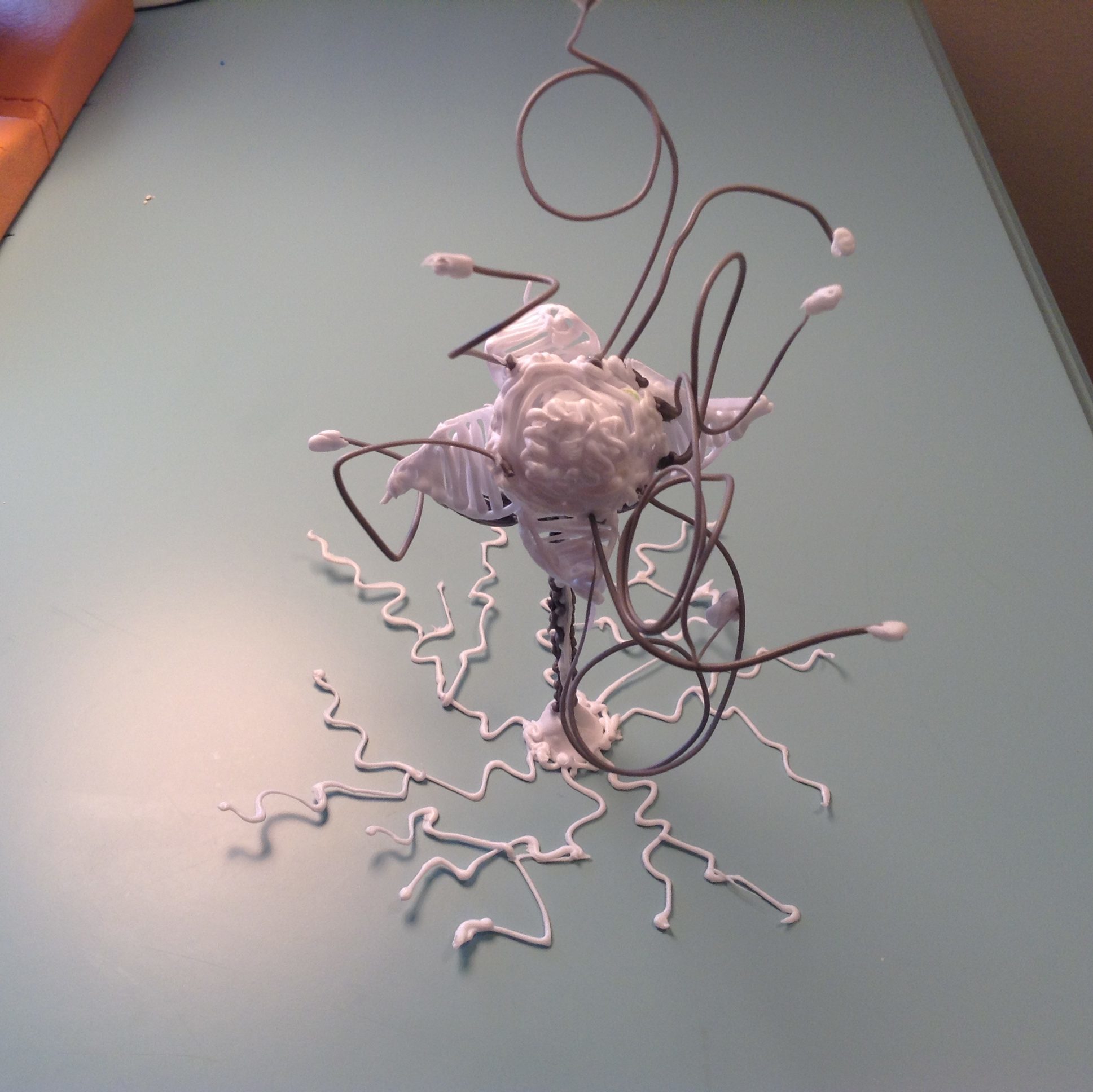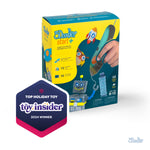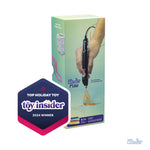Plant Adaptations (Living Things)
In this activity, students will work in pairs to synthesize and apply what they know about plant adaptations towards an imaginary discovery of a new plant within a particular biome. Students will sketch and doodle their "discovery" as a 3Doodled model. Plant adaptations will be based on the characteristics of a student-selected biome.

KnowledgeStudents havestudied the structural and behavioral adaptations of plants.
researched the parts of a plant, i.e., stem, petals, roots, sepal, flower and leaves.
researched methods of seed dispersal.
had practice with the 3Doodler.
studied the structural and behavioral adaptations of plants.
researched the parts of a plant, i.e., stem, petals, roots, sepal, flower and leaves.
researched methods of seed dispersal.
had practice with the 3Doodler.
ObjectivesStudents willimagine a new plant discovery.
cite relevant evidence about this plant's survival within a selected biome.
construct an argument with evidence to prove that this plant will survive within a selected biome.
construct an argument and a 3D model that demonstrates that their plant has adaptations that function to support its survival, growth, behavior, and reproduction.
imagine a new plant discovery.
cite relevant evidence about this plant's survival within a selected biome.
construct an argument with evidence to prove that this plant will survive within a selected biome.
construct an argument and a 3D model that demonstrates that their plant has adaptations that function to support its survival, growth, behavior, and reproduction.
MaterialsStudents will need3Doodler START (1 per pair)
white copy paper (1 per pair)
pencil (1 per pair)
Plant Adaptation Questions (1 per pair) *Print out or have students answer questions on a Google doc.
3Doodler START (1 per pair)
white copy paper (1 per pair)
pencil (1 per pair)
Plant Adaptation Questions (1 per pair) *Print out or have students answer questions on a Google doc.
Lesson PlanInstructions
Step 1Share the goal: Students will work in pairs to imagine a new plant discovery within a selected biome, which can be aquatic or terrestrial.
Step 2Project your computer or tablet screen on the board. Review characteristics of various biomes using a textbook from your curriculum. Optional reference
Step 3Discuss the role of a botanist and how botanists journal about new plant discoveries.
Step 4Review specific plant adaptations, both structural and behavioral. Note how these adaptations may increase a plant's chances of survival.
Step 5Review the parts of a plant and how they might differ growing in the tundra versus the desert.
Step 6Project Plant Adaptation Questions for students to view. Discuss how to answer questions based on the characteristics of a particular biome, e.g., the tundra.
*Using an extreme biome will help students better understand how to craft their plant's adaptations in ways that will increase its chances of survival.
Step 7Model how to sketch stencils of each of your plant's parts, label them, and then use the 3Doodler to create a 3D model of this plant. Weld plant parts together and embellish to add dimension and a base (roots) to stand plant upright.
Step 8Divide students into pairs and instruct them to select a biome. Students will work together to research and record the basic characteristics of their biome, e.g., climate, seasons, landforms, life forms, access to water, etc., on paper or a Google doc.
Step 9Check students' research before having them move on to answer the Plant Adaptation Questions. Students may record answers on a print out or a Google doc.

![]()
![]() Step 10
Step 10After approving students' answers to Plant Adaptation Questions, hand out paper for students to sketch stencils for each part of their plant, e.g., leaves, stem, etc. Prompt students to label all parts of the plant on the stencil paper.
Approve students' stencils before passing out 3Doodlers to embellish their plant models and add a base.

![]()
![]()
Share the goal: Students will work in pairs to imagine a new plant discovery within a selected biome, which can be aquatic or terrestrial.
Project your computer or tablet screen on the board. Review characteristics of various biomes using a textbook from your curriculum. Optional reference
Discuss the role of a botanist and how botanists journal about new plant discoveries.
Review specific plant adaptations, both structural and behavioral. Note how these adaptations may increase a plant's chances of survival.
Review the parts of a plant and how they might differ growing in the tundra versus the desert.
Project Plant Adaptation Questions for students to view. Discuss how to answer questions based on the characteristics of a particular biome, e.g., the tundra.
*Using an extreme biome will help students better understand how to craft their plant's adaptations in ways that will increase its chances of survival.
Model how to sketch stencils of each of your plant's parts, label them, and then use the 3Doodler to create a 3D model of this plant. Weld plant parts together and embellish to add dimension and a base (roots) to stand plant upright.
Divide students into pairs and instruct them to select a biome. Students will work together to research and record the basic characteristics of their biome, e.g., climate, seasons, landforms, life forms, access to water, etc., on paper or a Google doc.
Check students' research before having them move on to answer the Plant Adaptation Questions. Students may record answers on a print out or a Google doc.

After approving students' answers to Plant Adaptation Questions, hand out paper for students to sketch stencils for each part of their plant, e.g., leaves, stem, etc. Prompt students to label all parts of the plant on the stencil paper.
Approve students' stencils before passing out 3Doodlers to embellish their plant models and add a base.

Wrap Up
Assessment
Possible Extensions
Resources
Description of example
This is an Arctic Snowball discovered in 2017. It grows under the snow in the winter and has a short blooming season in the summer. Its pure white color enables it to camouflage itself neatly against the snow, so it is rarely detected. It gets its name from the spherical shape of its blossom, which is similar to that of a snowball. Its stamen act like tiny straws, sipping in droplets of water to keep it hydrated. Its roots travel, giving it the nickname of the "wandering snowball." This keeps this plant constantly situated under the sun's rays, even when buried under a foot or more of snow. Its stamen are also used to deter animals by spraying a poisonous mist. Its sepal have sharp pointy ends which can pierce a foraging animal. Its seeds are dispersed in the summer when the plant's blossom explodes into a tiny blizzard of white seeds.
Vocabulary
Educational Standards
Engage effectively in a range of collaborative discussions (one-on-one, in groups, and teacher-led) with diverse partners on grade 4 topics and texts, building on others' ideas and expressing their own clearly.
Students will share predictions and ideas based on their research throughout this activity.
Pose and respond to specific questions to clarify or follow up on information, and make comments that contribute to the discussion and link to the remarks of others.
Students will participate in discussions with their partner during this investigation, as well as with the whole group.
Construct an argument with evidence that in a particular habitat some organisms can survive well.
Students will make a claim about an imaginary plant and how its structures will increase its chances of survival within its biome.
Make a claim about the merit of a solution to a problem caused when the environment changes and the types of plants and animals that live there may change.
In the extension activity, students will theoretically transplant their plant into a secondary biome. Students will make predictions about their plant's impact and viability within this new biome.
Construct an argument with evidence, data, and/or a model that plants have internal and external structures that function to support survival, growth, behavior, and reproduction.
Students will sketch, design and construct a concrete model of an imaginary plant discovery that provides evidence of its survival within a selected biome.
Plan and create a design document to illustrate thoughts, ideas, and stories in a sequential (step-by-step) manner (e.g., story map, storyboard, sequential graphic organizer).
Students will plan their plant models as a series of labeled stencils, illustrating its design composition and individual parts.
Decompose (break down) a larger problem into smaller sub-problems with teacher guidance or independently.
Students will break down the process of understanding plant adaptations through research, design and problem solving of a new plant discovery..
Use technology to seek feedback that informs and improves their practice and to demonstrate their learning in a variety of ways.
Students will use the 3Doodler to visually demonstrate plant adaptations.
Exhibit a tolerance for ambiguity, perseverance and the capacity to work with open-ended problems.
Students will demonstrate willingness and competency within an open-ended task with more than one possible outcome.
Create original works or responsibly repurpose or remix digital resources into new creations.
Students will use a 3Doodler to innovate the design of a new plant discovery and its adaptations.
Use collaborative technologies to work with others, including peers, experts or community members, to examine issues and problems from multiple viewpoints.
Students will use 3Doodler to collaborate on the research and design of a new plant discovery.





